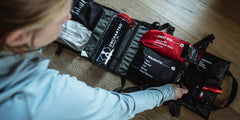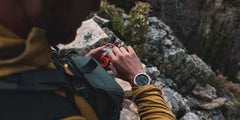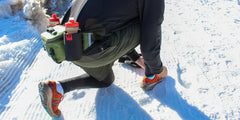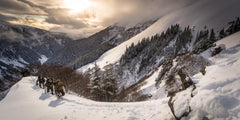
We’ve all seen the epic pictures: hunters, skiers, and hikers on snowy mountaintops, peering into valleys of untouched powder.
For anyone who enjoys these winter activities, it’s the dream and the ultimate goal. But it takes expertise, experience, gear, and peak fitness to even attempt to stand in these places.
There’s probably no group that understands the dynamics of the wild, and how to navigate them safely, better than hunters. That’s why we sat down with Steven Drake, a SITKA ambassador, to discuss what it takes to safely adventure into the wildest places on earth.

Uncharted: Where did your sense of adventure come from? And when did you first realize that you wanted to go further, and explore more than the average person?
Steven Drake: I grew up skiing and ski racing in Montana. My favorite aspect of skiing was putting myself way outside my comfort zone and seeing what happened. That usually resulted in tomahawking down the mountain, but it always raised my personal bar of what was possible. That feeling of elation and personal growth, as a result of facing discomfort head-on, has stuck with me and forms how I pursue most things in life. That said, I’m not a 20-year-old reckless skier anymore. Risk management and mitigation are constants.

Winter landscapes can lack signs, landmarks, etc. How do you make sure you’re always on track and not getting lost?
Use the power of the internet to E-scout a zone before you go! Also, track your progress with a phone app like onX. When you’re moving through the landscape, keep your head up and look around to make mental notes. Also, look behind you so you know what the route will look like when you’re going home.
When it comes to apparel, how do you not only dress but make sure you’re prepared for the unexpected?
Layer. Layer. Layer. Specifically, a synthetic base layer (for me, synthetic dries much faster than merino), mid-layer, insulation layer, and a waterproof Gore-Tex layer. The unexpected on winter hunts usually comes in the form of extreme cold. I never rely on being able to build a fire as I’m often above tree line or in coastal environments with high humidity. Instead, I bring an oversized puffy layer like Sitka’s Blizzard Aerolite Jacket and Bibs, and down tent booties from Western Mountaineering.
How does your clothing system change for high activity, like hiking, vs. low activity, like sitting or camping?
It’s all about moisture management. You need a technical clothing system that constantly moves moisture away from your body and dries fast. Warm environments are forgiving on your clothing system. If you hike hard and sweat out a shirt, you can usually just stand there in the sun and let the radiant heat dry you out. But in the winter, as soon as you change from an active activity to a static one, you have to layer up to trap that heat and not get cold.
During high activity, I usually wear a base layer and a hard shell, to block the snow, then as soon as I stop, I DON'T take off my base layer, instead, I take my hard shell off and trap all my body heat by layering up with my mid-layer, insulation layer, puffy gear, then hard shell on top of that. Assuming I’m wearing a technical clothing system (basically anything that’s not cotton), I’ll cook my base layer dry with my body heat, which takes about 20 minutes for a soaked base layer, and that moisture will get pushed away from my body.

Everyone in the world deals with cold feet. What’s your strategy?
Wear double boots, and you’ll be laughing at how warm your feet are while your friends are all on the verge of frostbite. If you don’t want to spend $800 on double boots, here are a few other strategies:
1) DON’T wear a thicker sock. You want more airspace and room for your toes to wiggle and promote blood flow when it’s cold. By wearing a thicker sock, or worse, wearing two socks, it only takes up more of that precious space and constricts blood flow. So wear your normal thickness hiking sock.
2) If you’re in a static situation, i.e., sitting or standing, create a barrier between the bottom of your boots and the snow. I like to stand on a piece of Thermarest foam or a tree branch. This will help keep your feet warmer by insulating your feet from the ground.
Tell me about a time when you almost didn’t make it out, and what decision put you in that position?
I was 7 miles in on a solo backcountry ski mission for the day when my knee started to flare up. It hurt so bad that I could hardly move it. I let loved ones know that I might have to spend the night out via my satellite texting device then layered up and took four ibuprofen. Luckily, the drugs kicked in enough that I was able to hobble my way out late that night. A doctor later diagnosed the knee pain as tendentious, an overuse injury. Prior to this day trip, I had zero pain, so I was thankful to have clothing, a satellite texting device, and a med kit with ibuprofen when things went sideways.
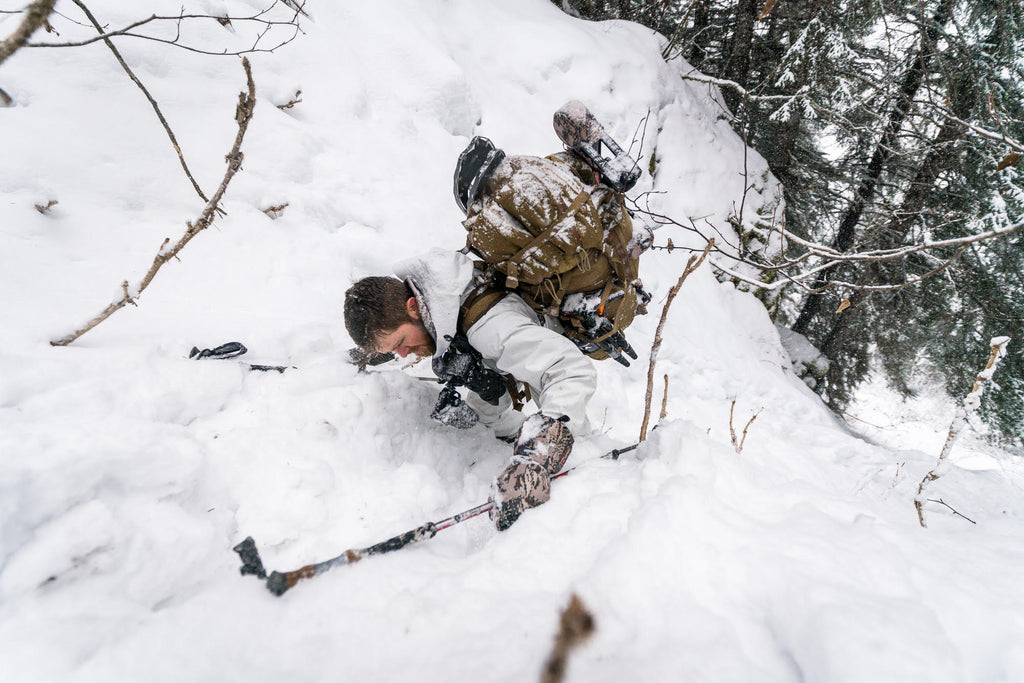
What’s the best piece of advice a mentor ever gave you?
You are going to die. (It was more of a motivational statement to do as much as you can in this one life.)
What would you tell someone who’s interested in backcountry adventures but has yet to get started?
What are you waiting for? You are going to die. ;-) Take an avalanche safety course. All your gear, logistics, and trip idea questions can be answered on YouTube.
